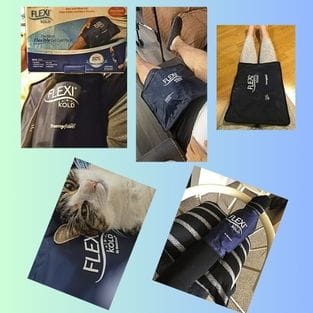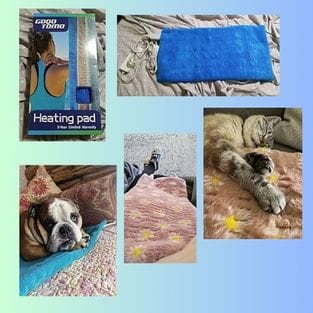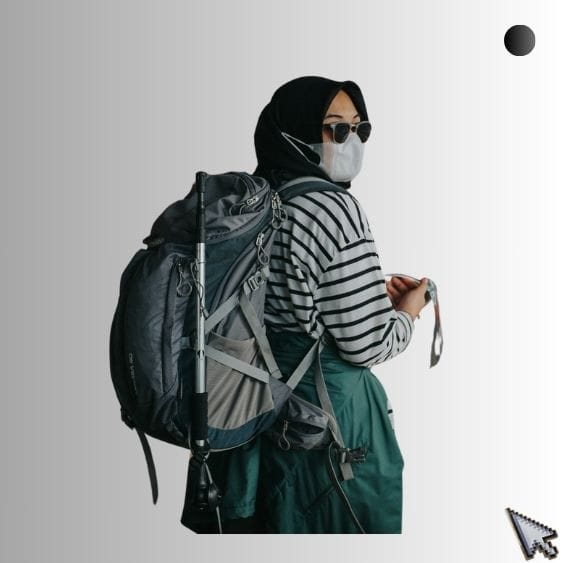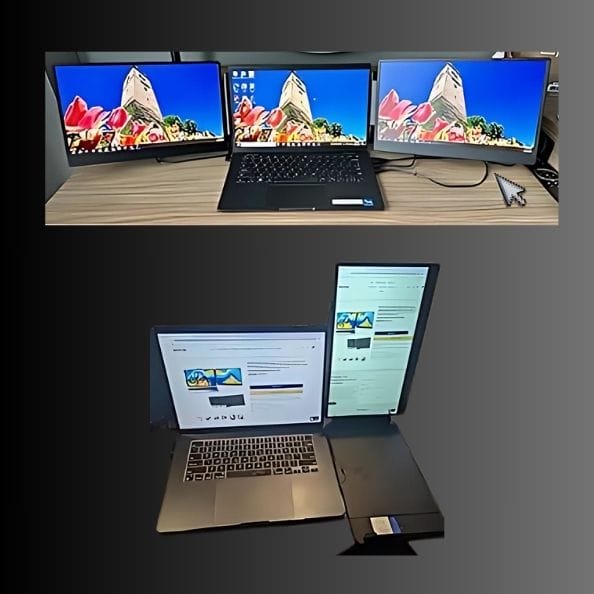When it comes to managing pain, swelling, or even just finding comfort from the stresses of daily life, cold packs, and hot packs are invaluable tools ...
Whether you're an athlete, someone who deals with chronic pain, or just looking for relief from a temporary injury, understanding how and when to use these therapies can make a significant difference in your well-being.
Key Takeaways:
- Cold packs are ideal for reducing inflammation and numbing pain, especially shortly after an injury.
- Hot packs are beneficial for relaxing muscles, improving circulation, and aiding in the healing process of chronic injuries.
- It's crucial to know the correct application of cold and hot therapies to prevent tissue damage and achieve the best results.
Understanding Cold Pack Therapy
What is Cold Pack Therapy?
Cold pack therapy, also known as cryotherapy, is a method used to reduce blood flow to a particular area, which can significantly reduce inflammation and swelling that causes pain, especially around a joint or a tendon.
It can temporarily reduce nerve activity, which can also relieve pain.
*When you apply a cold pack to your body, you're essentially slowing down the physiological processes in that area, which can be incredibly beneficial shortly after an injury.

The use of a cold pack is most effective during the first 48 hours following an injury. This is when inflammation is at its peak, and the cold can help mitigate the body's natural inflammatory response.
- It's important to wrap cold packs in a cloth to avoid direct contact with the skin and prevent frostbite.
- Typically, a cold pack should be applied for 15-20 minutes at a time with a break in between to allow the skin to return to normal temperature.
The Benefits of Hot Pack Therapy
What is a Hot Pack Therapy?
On the other end of the spectrum, hot pack therapy, or thermotherapy, involves the application of heat to the body. This can help relax and soothe muscles and heal damaged tissue.
Heat therapy can improve circulation and blood flow to a particular area due to an increase in temperature. Increasing the temperature can soothe discomfort, improve muscle flexibility, and help heal damaged tissue.

Hot pack therapy is particularly useful for chronic conditions, such as muscle pain, stiffness, or arthritis.
Heat can also be beneficial before exercise to increase the elasticity of joint connective tissues and stimulate blood flow.
However, it's crucial not to use hot packs on a new injury, as the increased blood flow can worsen swelling.
*Like with cold packs, it's recommended to use a barrier between the heat source and the skin and to limit each therapy session to about 15-20 minutes.
When to Use Cold Packs
Cold packs are most beneficial when used for acute injuries or pain, along with inflammation and swelling.
Think of
- sprained ankles,
- pulled muscles, or
- the immediate aftermath of surgery.
The cold helps by numbing the affected area, which reduces pain and decreases the metabolic rate of cells, which can help minimize tissue damage.
It's important to remember that cold therapy is not suitable for everyone.
==> People with sensory disorders that prevent them from feeling certain sensations should not use cold packs, as they may not be able to feel the damage being done by the extreme cold.
*Additionally, cold should not be applied to stiff muscles or joints, as it can exacerbate stiffness.
When to Use Hot Packs
Hot packs are your go-to option for chronic pain, stress relief, and muscle relaxation.
- They are particularly effective for ongoing discomfort, muscle spasms, and conditions that benefit from increased blood flow, such as osteoarthritis.
- Heat therapy is also used to treat chronic inflammatory conditions, as it helps to soothe and restore flexibility.
However, hot packs should not be used immediately after an injury, as the heat can increase bleeding and swelling in the tissues.
*People with certain conditions, such as dermatitis, deep vein thrombosis, or diabetes, should consult with a healthcare provider before using heat therapy, as it could lead to further complications.
Safety Precautions for Cold and Hot Therapy
When using cold or hot packs, it's essential to take certain safety precautions to avoid skin damage, such as burns or frostbite.
- Always wrap the pack in a towel or cloth to create a protective barrier.
- Never apply a cold or hot pack directly to the skin.
- Additionally, limit the time you use either therapy to prevent tissue damage—20 minutes is generally the recommended maximum.

It's also important to check the skin frequently during treatment to look for any signs of damage, such as redness or blisters.
If you have poor circulation or reduced sensation, you should use cold and hot therapies with caution and under the guidance of a healthcare professional.
Choosing the Right Cold Pack
There are various types of cold packs available, from gel-filled packs that can be frozen to bags of frozen peas that mold to your body.
When selecting a cold pack, consider one that stays flexible when frozen, so it can easily wrap around the affected area.
*Reusable cold packs are convenient and cost-effective, but in a pinch, a bag of ice wrapped in a towel can also do the trick.
The effectiveness of a cold pack also depends on how it's used ... It should be cold enough to provide relief but not so cold that it causes discomfort or damage to the skin.
Always follow the manufacturer's instructions for use and storage to ensure the pack remains effective and safe to use.
Choosing the Right Hot Pack
Hot packs come in various forms, including electric heating pads, microwavable packs, and chemical heat packs.
When choosing a hot pack, consider how quickly you need it to heat up and how long you need the heat to last – - Microwaveable packs are quick and easy to use, while electric heating pads can offer a consistent heat level for a more extended period.
The material of the hot pack is also important. Some packs are filled with grains or gels that can retain heat well, while others might use a chemical reaction to provide warmth.
Ensure that the hot pack has a cover or is wrapped in a cloth to protect your skin from burns.
Practical Applications of Cold and Hot Therapy
Cold and hot therapies can be used for various conditions.
- For example, an athlete might use a cold pack after a strenuous workout to prevent or reduce swelling and pain.
- Someone with chronic back pain might use a hot pack to ease the pain and improve mobility.
*It's all about understanding the nature of your condition and choosing the appropriate therapy.
In practical terms, this might mean alternating between cold and hot therapy for certain conditions.
*For instance, someone with an overuse injury might use cold therapy immediately after the activity to reduce inflammation, followed by hot therapy later to promote muscle relaxation and healing.
FAQ Section
Q: Can I use cold and hot packs if I have diabetes?
A: If you have diabetes, you should consult with your healthcare provider before using cold or hot packs.
Diabetes can affect circulation and sensation, which could increase the risk of tissue damage.
Q: How long should I apply a cold or hot pack to an injury?
A: Cold or hot packs should generally be applied for no more than 20 minutes at a time.
It's important to check the skin frequently for signs of damage and to allow the area to return to normal temperature between applications.
Q: Is it safe to fall asleep with a hot pack?
A: It is not safe to fall asleep with a hot pack, especially an electric heating pad, as it can lead to burns or even start a fire.
Always follow the manufacturer's instructions and use a timer if necessary to ensure safe use.
Your Takeaway
Cold packs and hot packs are simple yet effective tools for managing pain, inflammation, and muscle tension.
Cold packs are best used for acute injuries to reduce swelling and numb pain, while hot packs are ideal for chronic conditions to relax muscles and improve circulation.
Safety is paramount when using these therapies, and it's essential to use them correctly to avoid skin damage.
*By understanding when and how to use cold and hot packs, you can take control of your pain management and recovery process.
Disclaimer.
When you purchase through links on our site, we may earn an affiliate commission (that's how we stay in business). FirstFewFinds may use affiliate links to products and services on retailer sites for which we can receive compensation if you click on those links or make purchases through them.
We hope you find the list of our first few finds useful and helpful. Each product on our list has been carefully chosen by our writers and all opinions are our own. Check your choices and enjoy finding exactly what you need!








